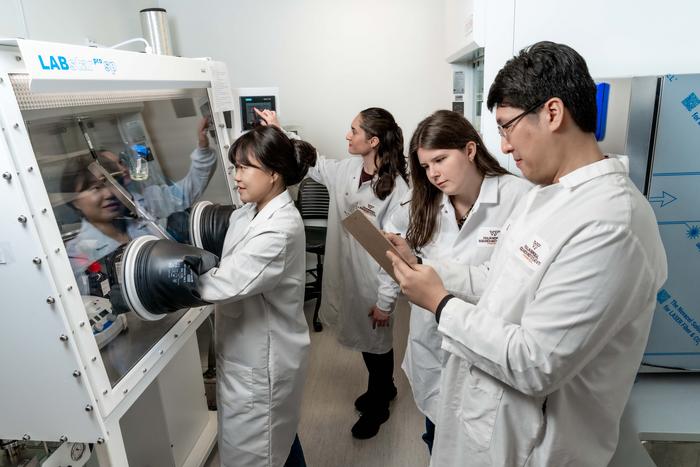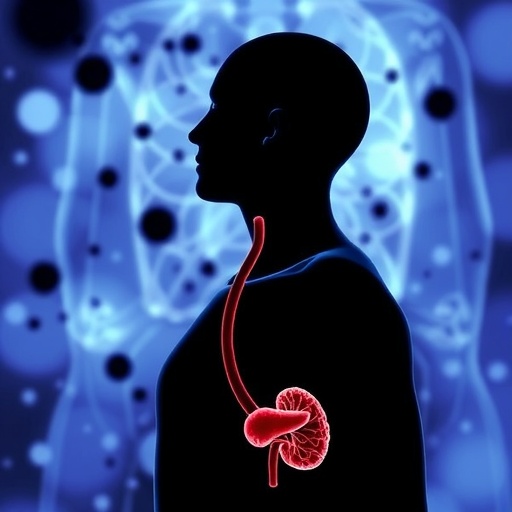
Researchers at Virginia Tech’s Fralin Biomedical Research Institute are exploring innovative approaches in cancer therapy by modifying the physical characteristics of microscopic biomaterials. The promising work led by DaeYong Lee, an assistant professor at the institute, is a groundbreaking endeavor that seeks to enhance the effectiveness and safety of cancer treatments. The research emphasizes the importance of biomaterial properties, such as size, shape, and stiffness, in influencing the immune response of the body, which is a crucial factor in combating cancer.
In a comprehensive review scheduled for publication in the esteemed Journal of Controlled Release, Lee and his research team illuminate the potential benefits of subtle alterations in therapeutic nanoparticles. Their hypothesis suggests that optimizing these physical characteristics can lead to improved interaction with immune cells, ultimately enhancing treatment outcomes for patients battling cancer. This fresh perspective on treatment methodologies could pave the way for significant advancements in the field of oncology.
In the review article, Lee articulates the essential roles that physical properties play in cancer therapy, detailing how these characteristics can be harnessed to manage and direct immune cell behavior. This revelation is particularly significant as it highlights an underexplored aspect of cancer treatment, shifting the current paradigm from a focus solely on chemical properties to a more comprehensive understanding of physical interactions within the body.
Lee’s research is founded on the burgeoning field of biomaterials science, where the manipulation of nanoparticles is increasingly recognized as a powerful tool in immunotherapy. By tailoring the physical properties of these materials, researchers hope to target and stimulate innate immune cells, including macrophages and natural killer cells, which are vital in the organism’s defense against malignant cells. This strategic targeting could potentially revolutionize how we approach cancer treatment, making it more efficient and targeted.
The early findings and methodologies suggested in Lee’s review stem from both established and novel studies that demonstrate the promise of biomaterials in clinical settings. However, it is noted that many past applications encountered pitfalls during clinical trials, necessitating a shift in focus for future research. Lee and his team are strategically moving from a primary focus on chemical modifications to enhancing the physical characteristics of these materials to optimize their interactions with immune systems. This approach could unlock the door to more successful clinical applications.
Underpinning Lee’s research is a pivotal study recently published in Nature Biomedical Engineering, where researchers successfully engineered positively charged proteins aimed at activating specific immune pathways. This innovative method involved the promotion of mitochondrial DNA release, which is crucial in priming T cells that fight cancer. In experimental models, specifically with advanced breast cancer in mice, the engineered polypeptides demonstrated a remarkable ability to elicit strong antitumor immune responses, suggesting a viable alternative strategy for cancer management.
Moreover, this research emphasizes the interconnectivity of various scientific disciplines to propel forward the future of cancer treatments. Lee advocates for interdisciplinary collaboration that merges materials science, immunology, and clinical research, considering these partnerships fundamental in overcoming the barriers preventing the transition from laboratory discoveries to real-world clinical solutions. Such collaboration will be instrumental for developing scalable, effective, and safe treatment modalities that can be applied across diverse patient demographics.
Despite the potential the research holds, challenges persist. Transitioning advancements from experimental settings to clinical applications often uncovers complexities regarding the production and widespread use of these biomaterials, especially when considering the diverse nature of cancer patients. However, embracing innovative approaches and sustained research could significantly demystify these obstacles, aiding in bridging the gap between scientific discovery and practical treatment efficacy.
The impact of this research extends beyond the immediate findings; it embodies a shift towards greater personalization in treatment protocols for cancer patients. By concentrating efforts on the physical design of biomaterials, Lee’s team is not only addressing existing limitations in treatment options but is also aligning their research with the overarching goal of improving patient outcomes within the oncology community.
As the initiative evolves, the momentum surrounding this research is bolstered by substantial institutional support, including strategic funding from the Red Gates Foundation. This backing underscores Virginia Tech’s commitment to strengthening its cancer research infrastructure and advancing innovative therapeutic avenues that could redefine treatment paradigms in the fight against cancer. The efforts at the Fralin Biomedical Research Institute exemplify a unified vision for fostering scientific exploration that translates into tangible health benefits for society.
In conjunction with the ongoing studies, Lee’s team remains dedicated to amplifying awareness of the crucial roles that biomaterials can play in enhancing immunotherapy. As they continue their research journey, there is an exhilarating prospect of unveiling new therapeutic options that can significantly alter the current landscape of cancer treatment and ultimately lead to better patient care strategies. The aim is to transform the way cancer therapies are developed and administered, ensuring that each patient’s unique health status is considered in the therapeutic approach.
The commitment of Virginia Tech and its researchers exemplifies an unwavering dedication to confronting one of the most significant challenges in modern medicine—cancer treatment. By embracing innovative strategies and technologies, they are charting a course toward groundbreaking solutions in oncology that promise to improve the lives of cancer patients everywhere.
—
Subject of Research:
Article Title: Engineering the physical characteristics of biomaterials for innate immune-mediated cancer immunotherapy
News Publication Date: 10-Feb-2025
Web References:
References:
Image Credits: Clayton Metz/Virginia Tech
Keywords: Cancer research, Biomaterials, Immunotherapy, Cancer therapy, Biomedical engineering, Cancer patients, Clinical research, Cancer treatments, Immune response.
Tags: biomaterial properties in cancer therapycancer therapy advancementsDaeYong Lee cancer researchenhancing cancer treatment effectivenessimmune cell behavior managementimmune response in cancer treatmentinnovative cancer treatment solutionsJournal of Controlled Release publicationoncology treatment methodologiesphysical characteristics of biomaterialstherapeutic nanoparticles optimizationVirginia Tech biomedical research





